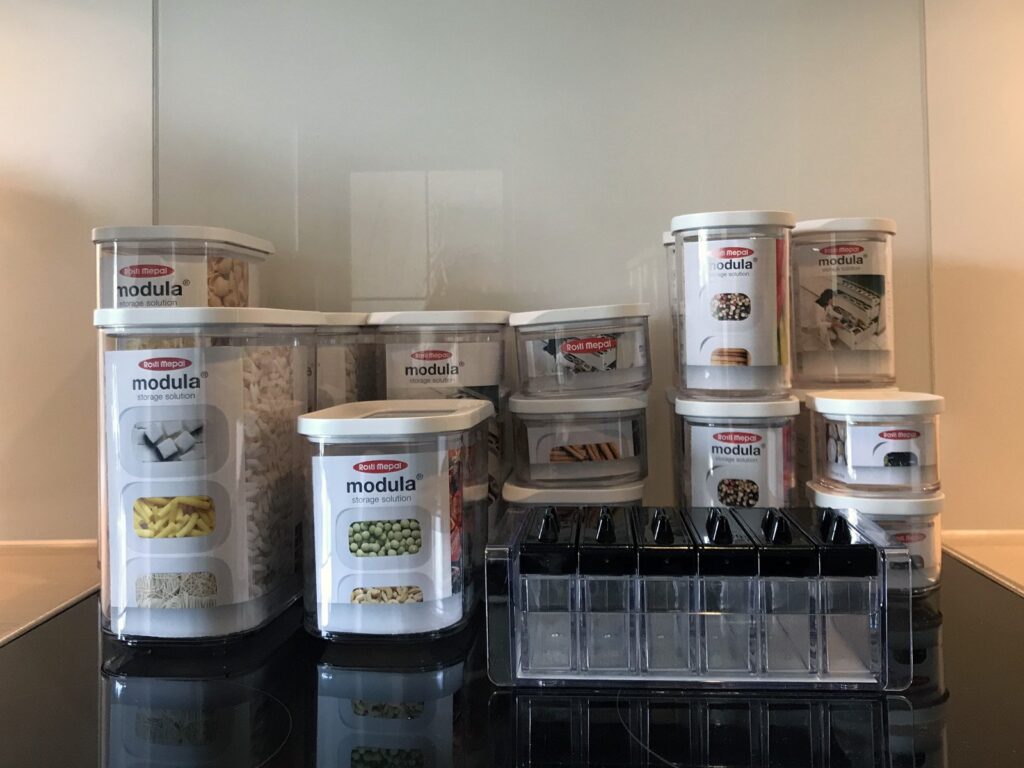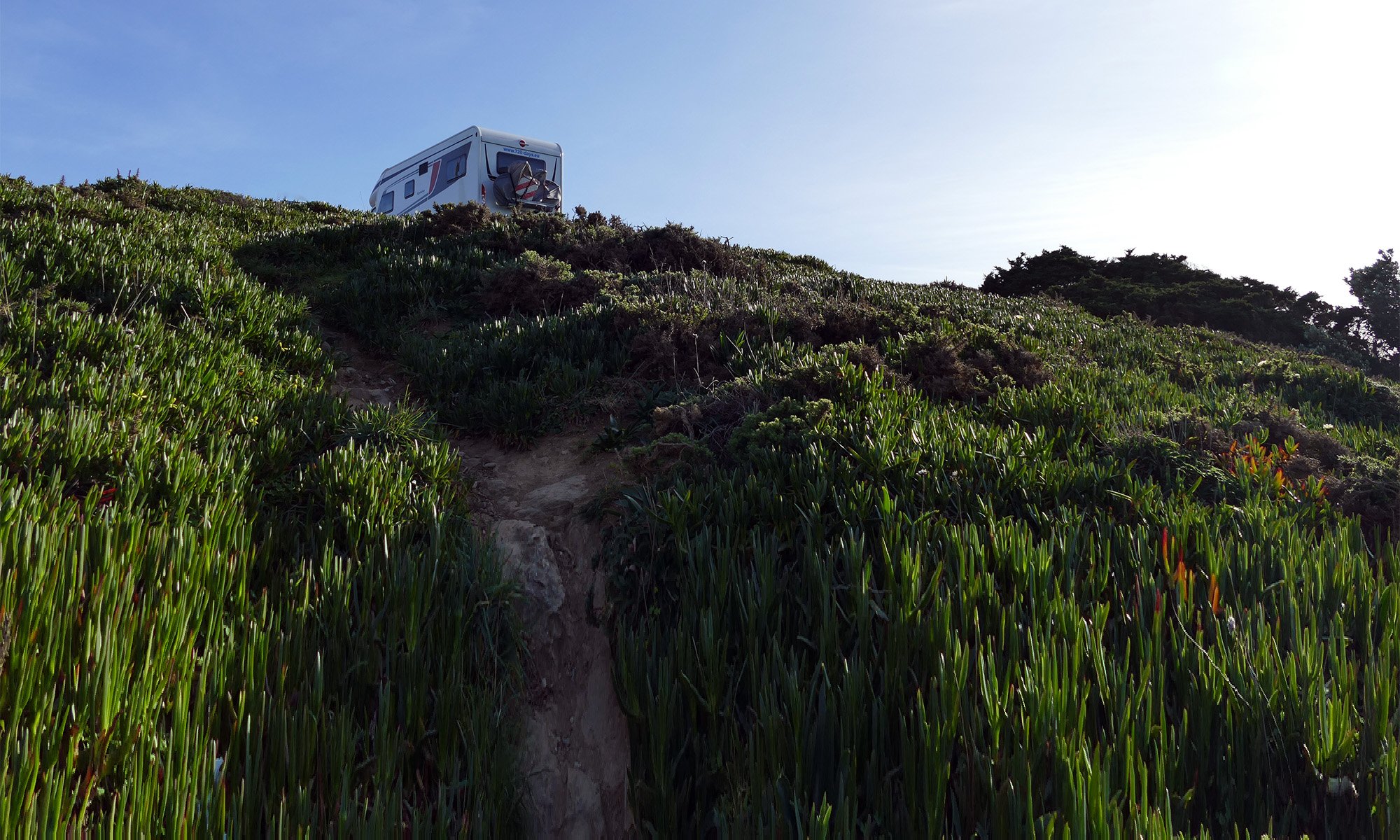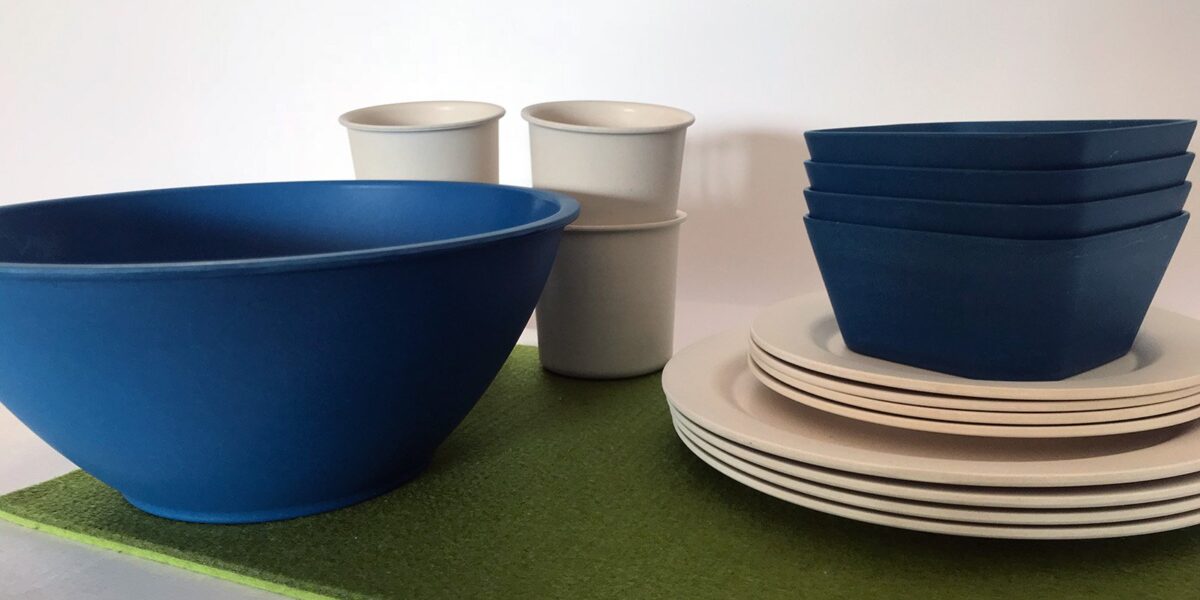Dinnerware, cutlery and pans … we everything in our home even in a top quality. However, it all has a severe disadvantage. It is way to heavy to carry around with us. Therefore, we decided to store most of our things and purchase lighter items especially for our motorhome.
Dinnerware
We searched quite a long time to find the right dinnerware. Our expectations were: Light, contaminant-free, eco-friendly. Therefore, we decided for bioplastic, which is easier written than purchased because most of the offers appear rather to be “greenwashing” and not really eco-friendly. So, what are the options:
Usually outdoor dinnerware is made out of melamine. Melamine has a lot of advantages: It is light, durable, break-proof and scratch-proof. Additionally, it can be (theoretically) recycled into new melamine dinnerware as long as it is pure melanin. However, melamine has a huge disadvantage that is especially difficult for dinnerware. Above 70 degree Celsius melamine starts to evaporate formaldehyde which is toxic. We didn’t fancy that.
The most common alternative is bamboo dinnerware. Many companies advertise 100% bamboo. If the dinnerware does not actually look like wood but like earth ware or plastic, then it can’t be made chemically only from bamboo. The bamboo fibers need an adhesive and in most of the cases, melamine is used. As described above, melamine has the disadvantage of evaporating formaldehyde when it gets too warm. Additionally, these compound materials cannot be recycled due to the bamboo anymore and also not composted due to the melamine. Therefore, the bamboo dinnerware appears to have a worse eco balance than pure melamine dinnerware.
We found however a company that uses PLA (polylactic acid) that is derived from fermented corn starch as an adhesive. Yes, PLA is also plastic but it is plastic that is generated by renewable sources and that is also compostable. Therefore, dinnerware that is compound of bamboo with PLA as an adhesive is really 100% compostable. Additionally, PLA does not have any negative effects on our health like melamine. The company is called Ecosoulife. Unfortunately there is a BUT: The company is located in Australia. To order a small set of dinnerware is not very sustainable. Therefore, we decided that we don’t get the exact set that we want but order in Europe.
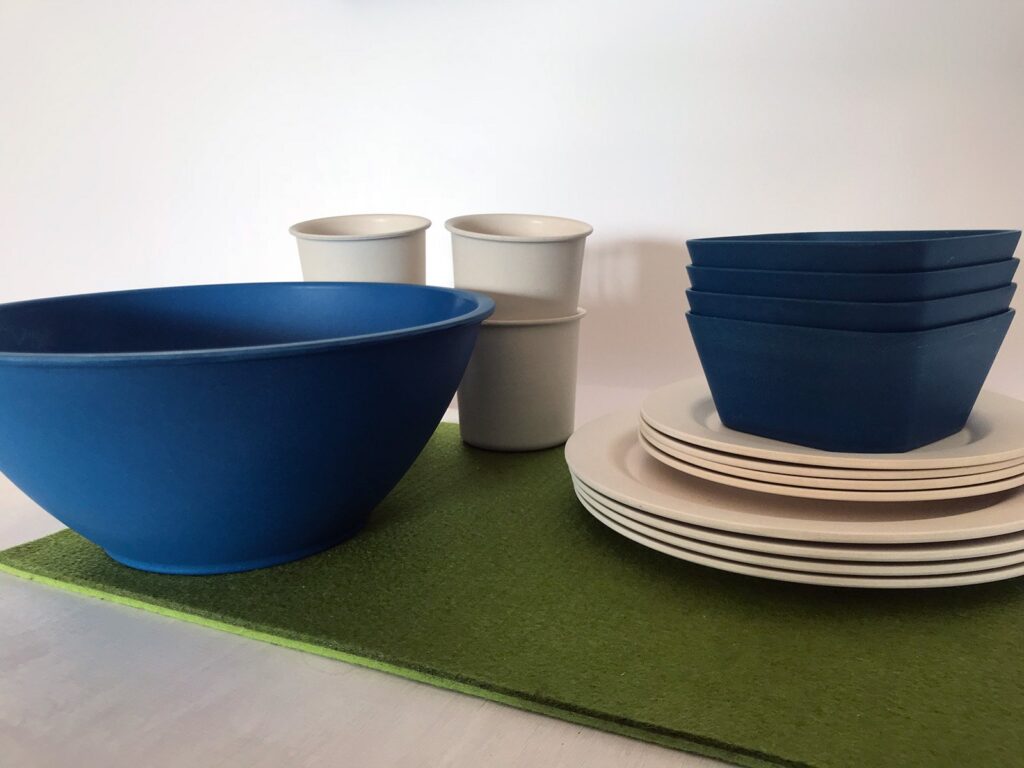
We ordered:
- Camper Set Dine (4 big plates, 4 mugs and a salad bowl)
- 4 Cereal bowls
- 4 small plates
[Update 2022: It seems that they are not available in Europe anymore. They are sold out in all shops where they have been prior available.]
Cutlery
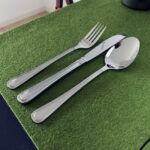
Cutlery was easier as we just purchased light stainless steel cutlery at Depot. Now, we got 6 knifes, 6 forks, 6 table spoons, 6 tea spoons and 2 pastry forks – enough not to wash the dishes after every meal.
Cookware
We reuse some of cookware we have at home and take with us a big and a small pot as the weight of the pots is ok. Additionally, we got a new frying pan that is much lighter than our pans at home and has additionally a foldable handle. That way, the pan does not eat up too much space in our cupboard.
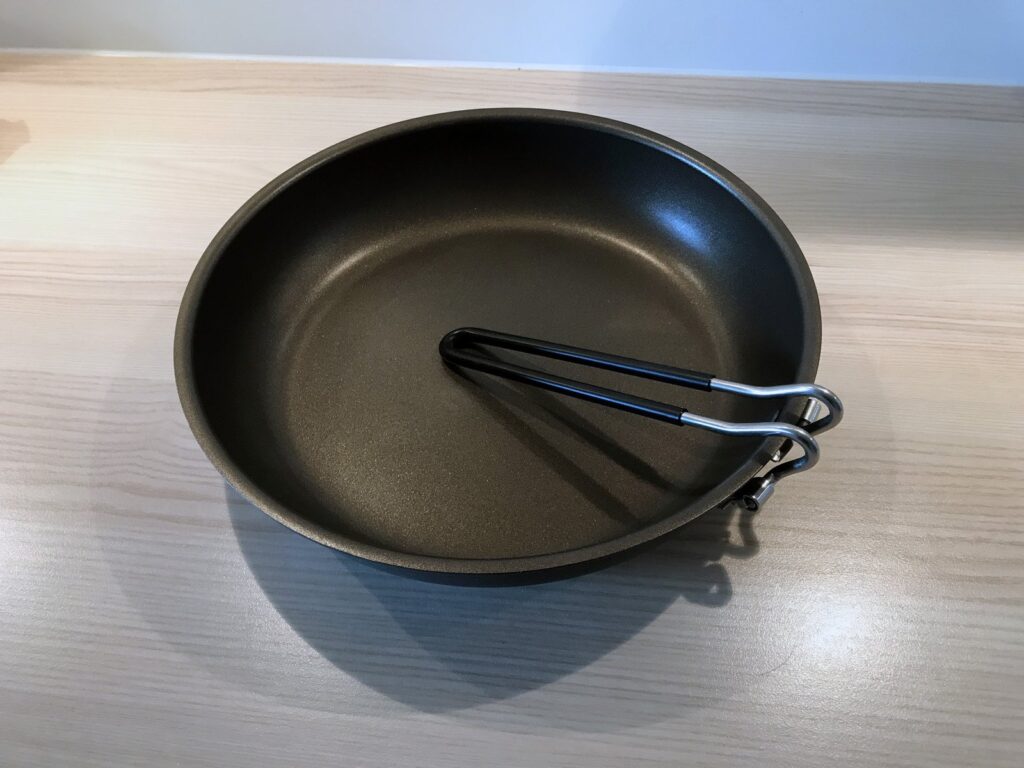
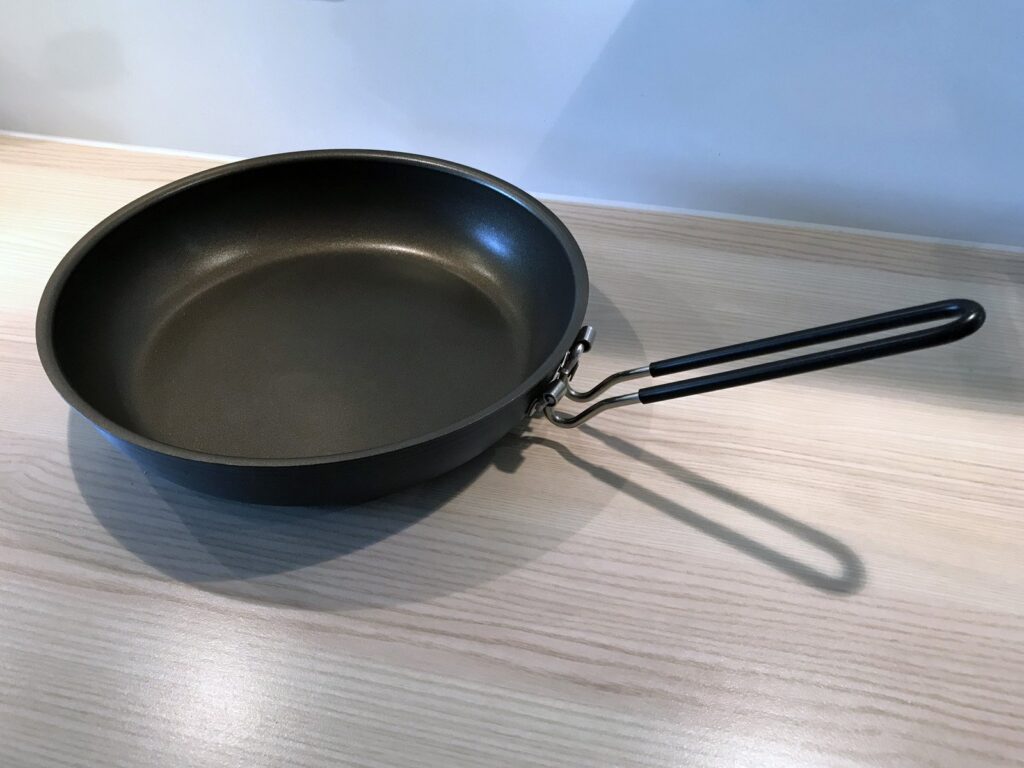
Since we did not want to take an electric kettle with us, we got a small new kettle made out of aluminium (super light) that can be used on the stove. The same applies to our Nespresso coffee machine. As a substitute we got ourselves a Bialetti Venus. This espresso maker is made out of stainless steel and works on gas, electro and induction stoves.
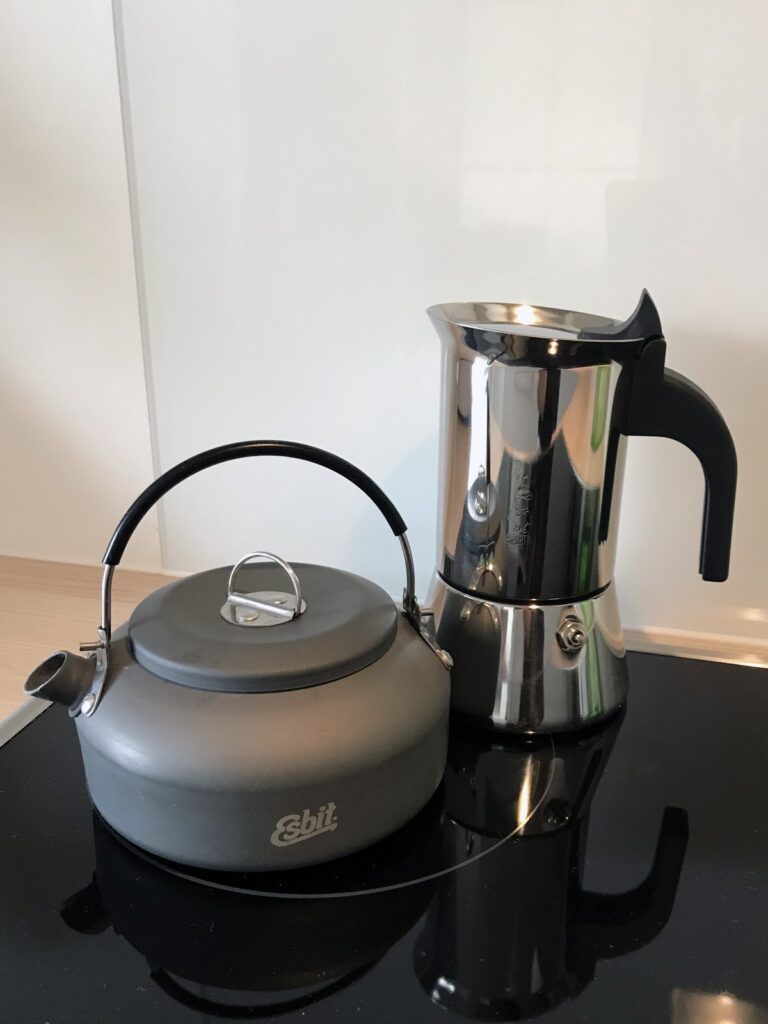
Storage boxes
Deciding for boxes was probably the hardest thing because we did not find what we wanted. Therefore we had to take a compromise. We wanted storage boxes that are light, break proof, not rattling, transparent, stackable, healthy and eco friendly.
We did not find any supplier that met our expectations. At home, we had storage boxed made out of glas. They are great but way too heavy. Metal and wood are not transparent. Therefore, only plastic remains. All bioplastic storage boxes that we found were opaque. So we ended up with traditional plastic made out of oil. There are also big differences in terms of eco-friendliness and health. The “cleanest” plastic would have been polypropylen – unfortunately we found only opaque boxes that had impractical lids.
Finally, we decided for Modula System von Rosti Mepal even that is far from ideal. We decided that we want to keep the storage boxes we purchase now also when we return home – so we are satisfied with the semi-optimal solution as we don’t produce waste in the forthcoming years. The boxes are made from a compound of SAN (Styrene acrylonitrile resin) and ABS (Acrylonitrile butadiene styrene). Based on our research, those boxes are safe at room temperature which is ok for storage boxes because we fill them just with dry food.
